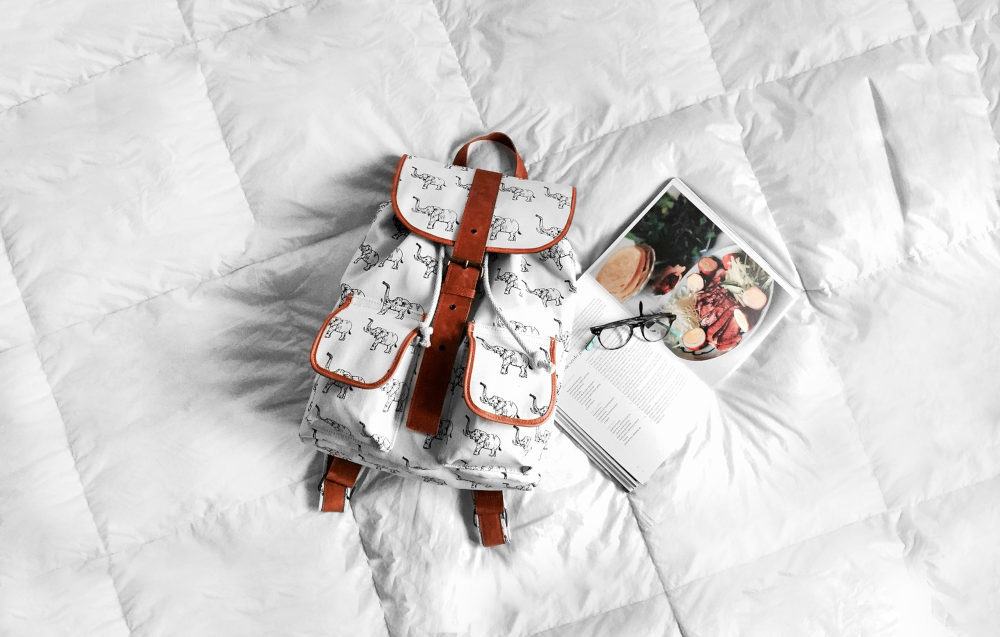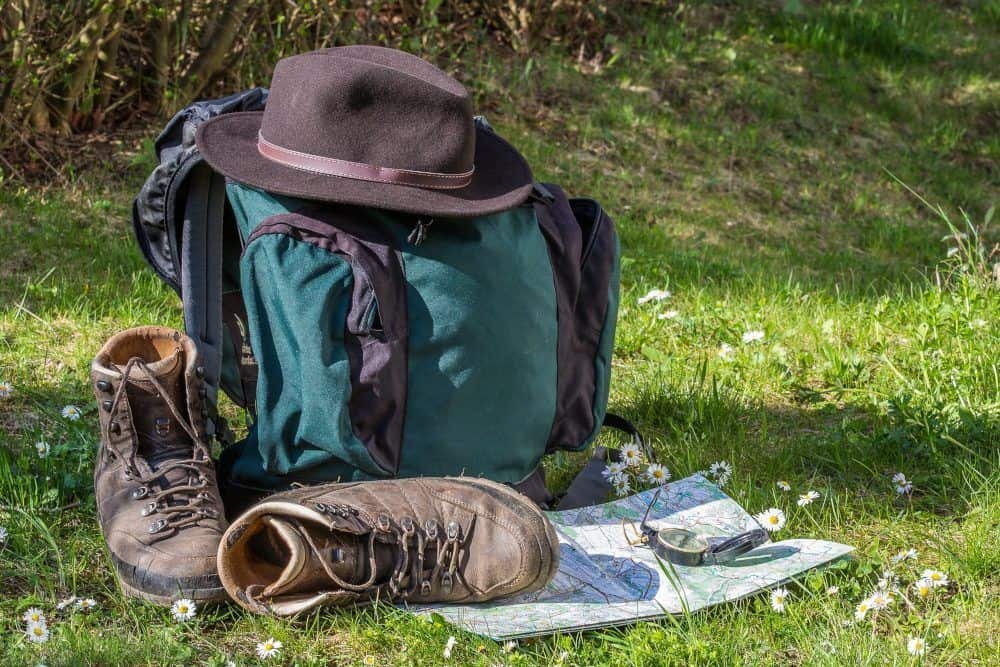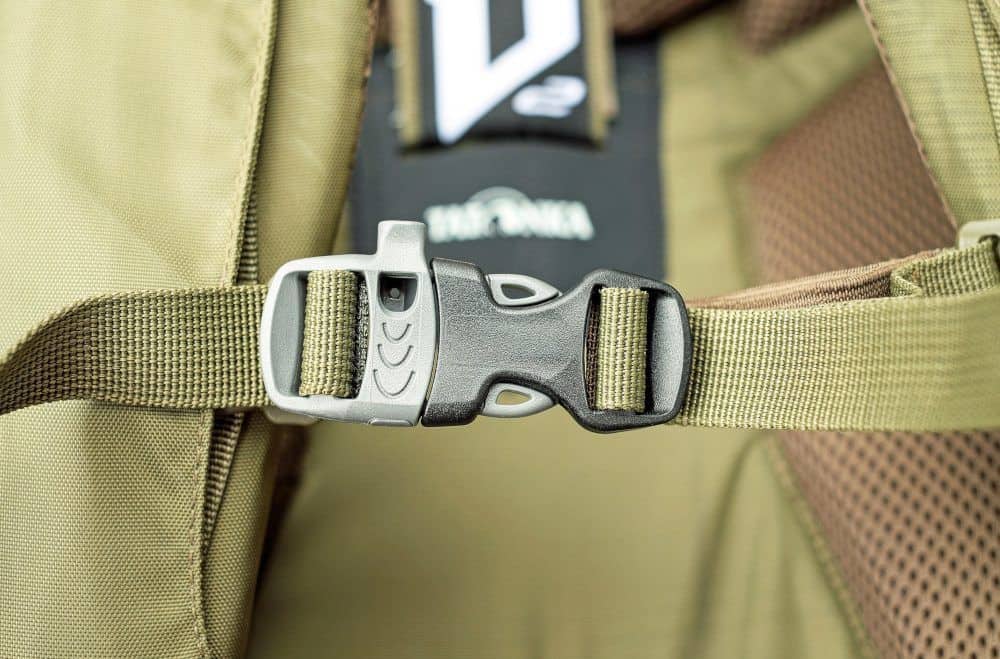If you grew up in the 1980s and were jealous of the way all the cool kids carried their backpacks (carelessly slung on one shoulder) because no matter what you did, you couldn’t, you can take solace in the fact that you were right not to. And with times, backpacks have also evolved from something that you put your books in and lugged to school, to a style statement and an absolute must for hikers.

Regardless of how your day is, the backpacks of today are really stylish, functional and convenient, and have far more uses than just carrying books to school. But, wearing it the right way is of utmost importance, if you spend a lot of time carrying it. And if you do it the right way, it can go a long way in preventing shoulder and back pain. Now it is easy to do what all the cool kids did back then; slinging the bag over one shoulder while heading off the door, but that could lead to more pressure on the neck, shoulders and the back.
So, in order to prevent pain at a later stage, it is essential that one develops good backpack habits. In this article, we will learn how to wear a backpack properly in the right manner, whether it is for backpacking, hiking, for school or for work.
Table of Contents
Wearing a Backpack the Correct Way
This article will pinpoint how to position your backpack correctly, every time you step out of the door. In order to get the technique right, you will have to practice it for days, if not for months, to make it a habit.

If you follow these instructions, you will find that you can use the backpack even while you are jogging or running, or wear it for long periods because it is not swaying from side to side.
How Should Children Wear a Backpack?
According to the American Academy of Pediatrics (AAP), school going children should only carry 10% to 20% of their body weight in their backpacks. Cartoons depicting children carrying enormous backpacks are not regarded as funny anymore. If you are a parent, it is advisable that you help lessen your child’s load.
If, for some reason you are unable to do so, you should consider changing his/ her backpack. For more info see our guide to children’s backpacks.

How to Fit Your Backpack for Work or School
These tips are for getting a good fit for daytime carrying and work with both kids and adults.

Length of the Torso
Most backpacks available on the market are designed for men who have a longer torso, so it is important to consider the torso length of the backpack while buying one. It is a key factor, especially choosing backpacks for women or children with a smaller torso.
The backpack’s length should be so that it always ends 2 inches (5.08 cm) above the hips and never past it. Before wearing the backpack, the shoulder straps should be adjusted approximately 2 inches (5.08 cm) below the shoulder. Use the hip belt (if provided with the backpack) to see if the straps sit properly on the shoulders without a gap. If you feel there is a gap between the shoulders, the pack is likely too long for you. While still wearing the hip belt, if the backpack slides down, your torso is too big for the backpack.
Width of the Backpack
This is another very important factor to consider. If the backpack is extending to the sides of your back, it is apt to become uncomfortable and hinder movement if you are likely to carry it on a long hike. Carrying a backpack much narrower than your back works just fine.

Backpacks Designed for Women and Children
These days, more and more companies are putting out products that are specifically designed for women and children with smaller torsos and other considerations. Backpacks designed for women have shoulder straps designed with consideration for breasts. The ones designed for kids have shorter torso lengths and are designed to fit a child’s frame perfectly. For this same reason, they are sometimes ideal for smaller women as well.
Adjustable Straps
Adjustable shoulder straps are always a great idea because they fit over any kind of clothing, whether you are wearing a heavy jacket or a t-shirt. Before buying, make sure that the shoulder straps are well padded and wide so that they don’t cut into the shoulders.
To improve the safety of the load, a lot of backpacks are provided with a sternum strap. If the backpack you own slides off the shoulders or sways from side to side, you should consider getting a backpack with a chest strap.
Hip belts are also an important addition to minimize the strain on your shoulders. These straps are usually found in backpacks meant for climbing and hiking and cannot be found on ordinary school bags. If your child complains of shoulder or back pain using the current pack, you should consider looking for a backpack with a hip belt.
Backpacks for All-Day Carrying or Hiking
We will follow the same principle as prescribed by the AAP, that is not carrying more than 10% of your body weight on your back if you are on a day-long hike. We are talking about a fully-loaded backpack that also contains a hydration pack or a water bottle. As long as the backpack is positioned properly on your back, one should have no trouble carrying the backpack all day long.

For those who are going on a multi-day trek or hike, the backpack should not exceed more than 20% of your current body weight when the backpack is full. For example, if you are 200 pounds (90.72 kgs), the backpack should weigh no more than 40 pounds (18.14 kgs). You are going to be carrying heavier loads, you may want to invest in a good trekking pole or a comfortable pair of hiking boots.
Gradually increasing the weight of your backpack and increasing your stamina will prepare you for carrying heavier weights and also build your muscles. Also, if you are training to go on longer hikes, you should familiarize yourself with your backpack. This can be achieved by wearing it, adjusting the straps and taking it off as a routine. This will also contribute to you learning about how to wear a backpack properly.
Choosing Backpacks for a Hike
If you compare backpacks which are used by day packers and hikers to the ones which are used in multi-day treks, you will find that they are generally more robust and of a larger build. Most of these backpacks come with external or internal frames. It is generally a good idea to get a backpack with an internal frame if you are unlikely to be carrying irregular shapes such as a tent.

Torso Length Is Important
To understand how to wear a backpack properly, you should know if your torso is capable of handling its length, so you should measure it. To do this, you will need a tape measure and the help of a friend. Tilt your neck a little and ask the friend to measure from where your shoulders meet your neck to the length of the vertebra, ending where the top of your hip bone meets your spinal cord. This region is your torso length.
When you look at professional hiking backpacks, they would have the torso length jotted down. A few companies also provide suspension systems that are adjustable so that you can match it exactly to the torso length.
Hip Belt
This should be adjusted as soon as you slip on the backpack. It should be fitted just right above the hip bones, as it avoids slippage and does not cut into the skin.
Chest Strap
The chest strap should be adjusted so that it sits about a finger’s length below the collarbone. Make sure it is not very tight and that your arm movement is free. In case it feels uncomfortable, feel free to readjust it to your liking.
Shoulder Straps
These should never carry any load and should be snug above your shoulders. Also, we can’t say this enough times, make sure these are padded.

What Not to Do
Any article about how to wear a backpack properly would not be complete without informing you how not to wear it as well.
Never Wear the Backpack Using a Single Strap
Doing so looks very cool and casual, but doing so also puts all the weight of the backpack on one shoulder. And if you do that, you would be walking with a bad posture, and you are going to be walking off-balance. We should also mention that doing so will cause pain in your shoulders, neck, and back, and no amount of switching the single strap between the two shoulders will help it.
Don’t Sling It Low on the Back
All the cool kids are doing it so you shouldn’t either. It is a popular misconception that doing so takes off the weight off your back. But people forget to mention that doing so also puts excess strain on your shoulders. This will also put the pressure on your lower back, and will cause the bag to sway back and forth, resulting in an uneven gait. So, take some time out, and adjust those straps right!

Conclusion
Hopefully, this article helped you figure out how to wear a backpack properly. Before you strap on your backpack, remember to pack it light and put the heavier objects in the middle, but avoid overloading it. Also, take your time and go through a number of reviews to determine what size and shape are right for you. Learning how to wear a backpack properly is important if you are an avid hiker who goes on a lot of walking trips.
